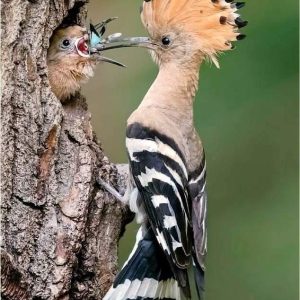 You can travel to Uganda bird watching safari at any time of the year if you prefer but for the latest intra-Africa from Southern Africa, which first arrives in Uganda in July, August, and September, includes many cuckoos such as the lowland cuckoo known as the striped long-tailed cuckoo. Most summers in the southern countries of Malawi and Mozambique, the globally vulnerable and endangered blue tern breeds in tall grasslands such as southern Africa, southern Tanzania, Zimbabwe, and Malawi.
You can travel to Uganda bird watching safari at any time of the year if you prefer but for the latest intra-Africa from Southern Africa, which first arrives in Uganda in July, August, and September, includes many cuckoos such as the lowland cuckoo known as the striped long-tailed cuckoo. Most summers in the southern countries of Malawi and Mozambique, the globally vulnerable and endangered blue tern breeds in tall grasslands such as southern Africa, southern Tanzania, Zimbabwe, and Malawi.
Some of Uganda’s most desirable birds are easy to spot from June to September, while July and August are spectacular bird seasons. Among these are the very local Gray Bills that nest at this time from late May onwards. The Mbwindi Marsh in Bwindi Impenetrable National Park is the place to look for this incredible bird, and it can be easily spotted when nesting.
Otherwise, using our experience and expertise, high-pitched hissing and rhythmic meowing help us from time to time. A magnificent breasted green pitta that begins its hunt at 6:00 in the morning you get while doing the display call will also most likely appear between 6, so you’ll definitely find it around the same time. Just as the above months seem like the best months for bird watching safari in Uganda, December, January and February is generally drier, with smaller canopies such as the rare Ituri Batis.
Above all, the Ugandan Woodland Warbler is constantly on the move. This is also one of the best times for Uganda's only endemic fox weaver. It is good to call the Kidepo Valley National for its spectacular giant black partridges. – Visited by black-breasted chickens, barbets, heartless, buff-crested, white-bellied geese, the highest local and endemic East African Karamoja Paris, and the northern tropics grasshopper buzzards at this time of year, along with nomadic and gregarious animals, you will visit such as the Abdim stork.
What to carry on a birding Safari in Uganda
 Opting for Uganda as your birding spot is a crucial decision that can greatly influence your experience. Therefore, one should prepare extensively, mentally, physically, and financially, considering the cost of travel, time, and other expenses, to create indelible memories. As our birding tours in Uganda take place in secluded rural areas, particularly in forests and marshes, either by foot or on small boats, and rarely within populated areas, it is vital to pack all necessary gear to enrich the experience. Consequently, this piece presents an all-encompassing inventory of essential elements to guarantee an extraordinary and unforgettable bird-watching excursion in Uganda.
Opting for Uganda as your birding spot is a crucial decision that can greatly influence your experience. Therefore, one should prepare extensively, mentally, physically, and financially, considering the cost of travel, time, and other expenses, to create indelible memories. As our birding tours in Uganda take place in secluded rural areas, particularly in forests and marshes, either by foot or on small boats, and rarely within populated areas, it is vital to pack all necessary gear to enrich the experience. Consequently, this piece presents an all-encompassing inventory of essential elements to guarantee an extraordinary and unforgettable bird-watching excursion in Uganda.
1. Right Clothing on bird watching safari
bird watching safari are Similar to other tourism activities, birding in Uganda necessitates individuals to bring along specific clothing items for their comfort and a truly unforgettable experience. Suitable attire for observing birds in Uganda consists of environmentally-friendly lightweight long-sleeved shirts and pants. Prepare for your tropical adventure by packing 3/4 sets of long pants that dry quickly, along with 3/4 long-sleeved shirts that also dry quickly.
Bring 2 short-sleeved shirts or t-shirts, 2 pairs of shorts or capris, and 1 sleeveless shirt. Don't forget a fleece pullover or lightweight jacket, as well as a rain jacket and pants. Pack 4 pairs of mid-calf socks that are long enough to tuck into your pants. Lastly, a wide-brimmed hat will provide protection from the intense sunshine you encounter on your long walks and open boat rides.
2. Hiking boots that are resistant to water.
To enhance the number of bird sightings in Uganda, one will participate in extended and brief walks across diverse habitats, including wetlands, forests, and savannah plains, which require proper footwear such as walking shoes, rain boots, or gum boots. For birdwatching in marshy areas like Semliki during the rainy season, reliable waterproof boots are essential, especially for exploring the Mubwindi Swamp.
3. A bag designed for outdoor activities or fieldwork on bird watching safari.
When birdwatching in Uganda, it is imperative to have a waterproof backpack to hold various birding necessities including cameras, spare batteries, binoculars, snacks, laser pointers, playbacks, insect repellents, sunscreen, and other essentials while exploring the diverse habitats of Uganda.
4. Guidebooks for bird watching safari
The contents of your packing list for your upcoming birdwatching expedition in Uganda are of utmost importance, as they will be determined by the length of your birding adventure. They are multiple establishments and literature outlets that sell them. Our safari tour guides have a few guidebooks accessible within their vehicles that you will be occupying, but the most highly recommended publications are Terry Stevenson and John Fanshawe’s written books.
An informative handbook for identifying birds found in various countries including Kenya, Tanzania, Uganda, Rwanda, and Burundi. The books Birds of Africa, South of the Sahara authored by Ian Sinclair and Peter Ryan, and Bradt Uganda Travel Guide written by Philip Briggs and Andrew Roberts would prove to be extremely useful due to their comprehensive coverage of tourism-related information.